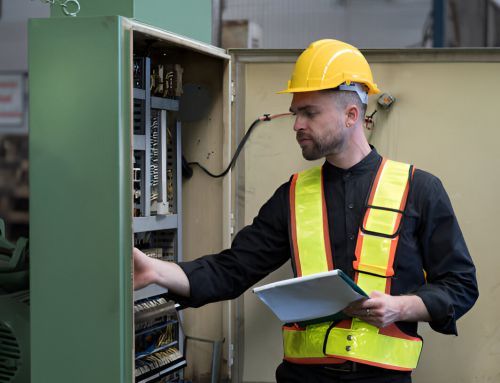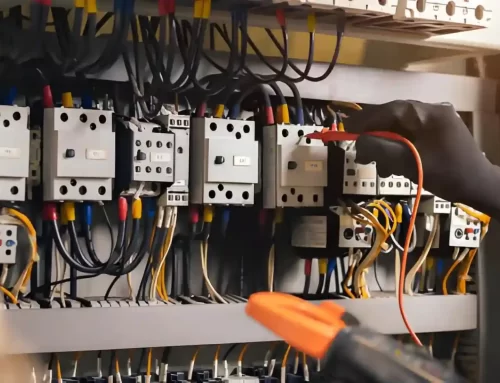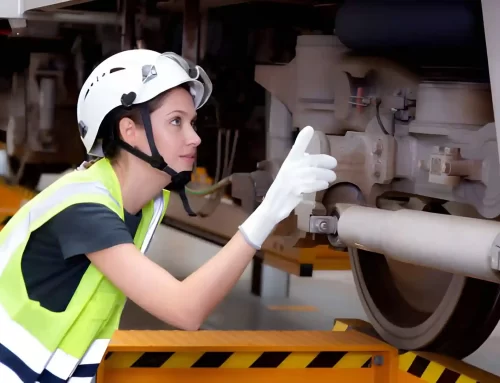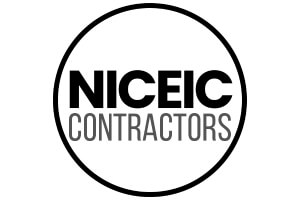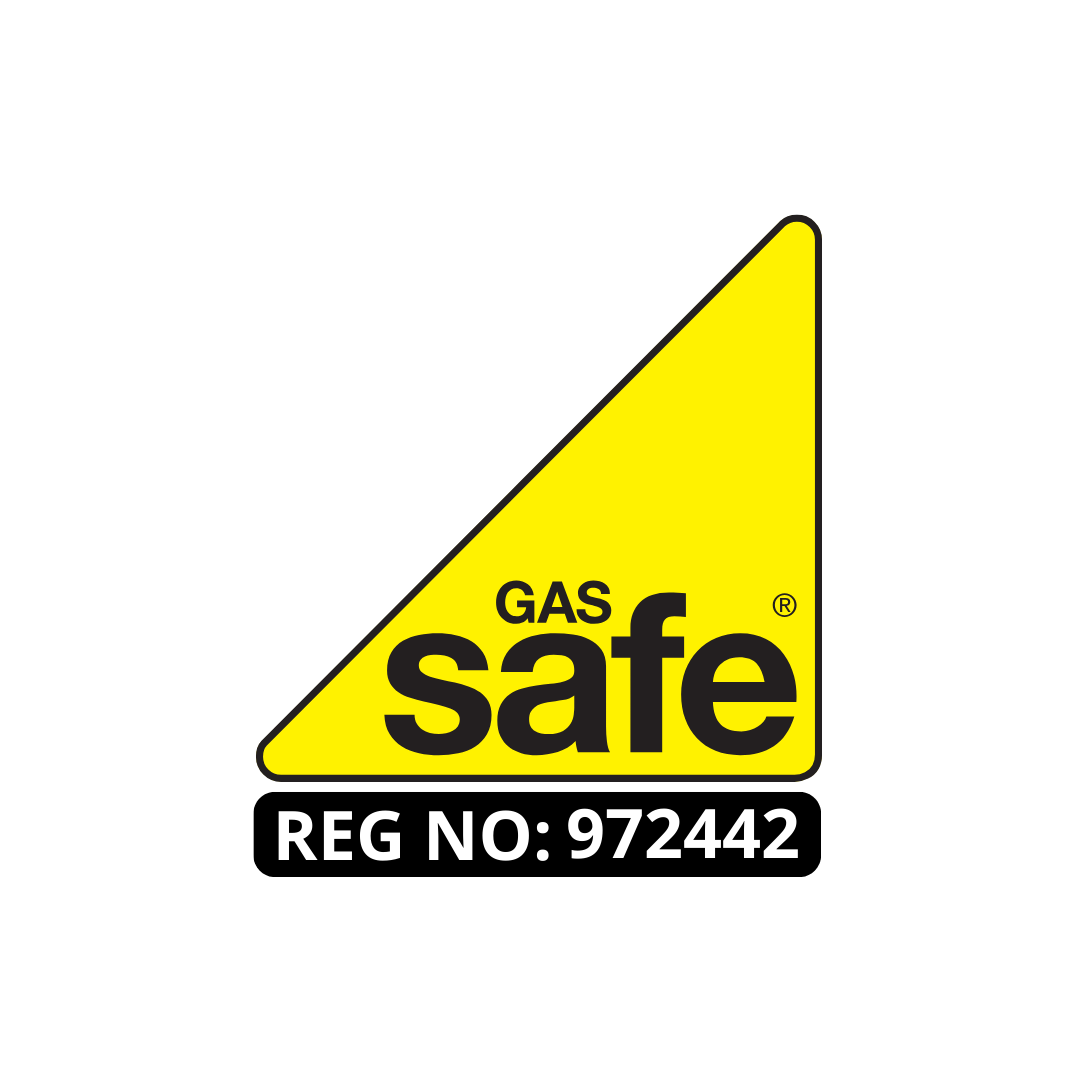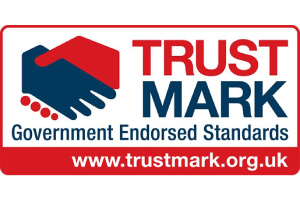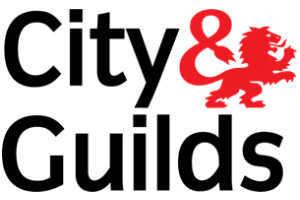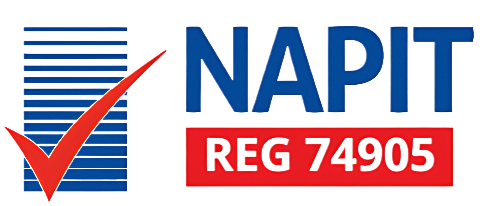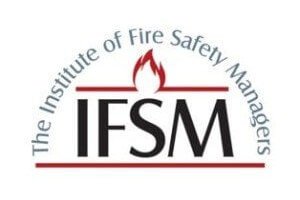
In the field of property management and safety, the Electrical Installation Condition Report (EICR) is an essential tool, yet its nuanced grading system often goes unrecognized. Each grade—C1, C2, C3, and FI—indicates a specific level of electrical safety concern, ranging from immediate hazards to recommendations for improvements. By clarifying these codes, property owners can effectively prioritize repairs and maintenance, ensuring compliance with safety regulations. Understanding the implications of each code can mean the difference between routine upkeep and critical oversight. What may appear to be a mere technical detail can significantly influence the safety and compliance of a property. Therefore, property owners and facility managers must pay closer attention to these distinctions. Let’s Understanding the Different Grades of an EICR: A Complete Guide.
What is an Electrical Installation Condition Report (EICR)?
An Electrical Installation Condition Report (EICR) is a formal document produced by a qualified electrician or approved contractor after they have conducted a thorough inspection and testing of the electrical installations within a property. This assessment is crucial to ensure that all electrical systems and circuits are functioning efficiently and safely, adhering to the prevailing standards of electrical safety.

The EICR requirements mandate that the inspection process cover all the accessible electrical components of a property, including wiring, sockets, fuse boxes, and light fixtures. The objective is to identify any defects, deterioration, or deviations from the wiring standards that could potentially pose safety hazards.
Following the inspection, the EICR details any observed damages, deterioration, or non-compliance with the existing safety standards, and categorizes the urgency of these issues.
EICR frequency is a critical aspect governed by various factors including the type of property, its usage, and the age of the installation. Typically, it is recommended that residential properties undergo this inspection at least every 10 years or with every change of occupancy.
For commercial premises, the frequency is usually increased to every 5 years due to potentially higher loads and more complex systems.
Why EICRs Matter for Property Owners and Tenants
While often overlooked, Electrical Installation Condition Reports (EICRs) are essential for both property owners and tenants, serving as a critical safeguard against potential electrical hazards.
For property owners, the importance of EICRs extends beyond mere compliance with safety regulations. These reports provide a detailed analysis of the electrical systems within a property, highlighting areas of non-compliance and deterioration that could compromise property safety.
This preemptive insight allows property owners to address issues before they escalate into more significant problems, thereby protecting their investment and ensuring the safety and functionality of the property’s electrical installations.
For tenants, EICRs are instrumental in enforcing tenant rights to a safe living environment. They serve as a formal assessment that the electrical systems are in satisfactory condition and do not pose a risk to the occupants.
This not only enhances the livability of the property but also provides tenants with a basis to request necessary repairs or upgrades, thereby ensuring their safety and comfort.
Ultimately, EICRs symbolize a commitment to upholding standards of safety and quality in residential and commercial properties, reinforcing the responsibilities of property owners while safeguarding tenant rights.
EICR Codes: Explained and Their Significance
Electrical Installation Condition Reports (EICRs) utilize specific codes to categorize the condition of electrical systems and components within a property. These codes are crucial for determining the urgency and type of remediation required to ensure safety and compliance. Understanding these codes is essential for property managers, electricians, and safety inspectors who are tasked with maintaining electrical standards and adhering to legal requirements.
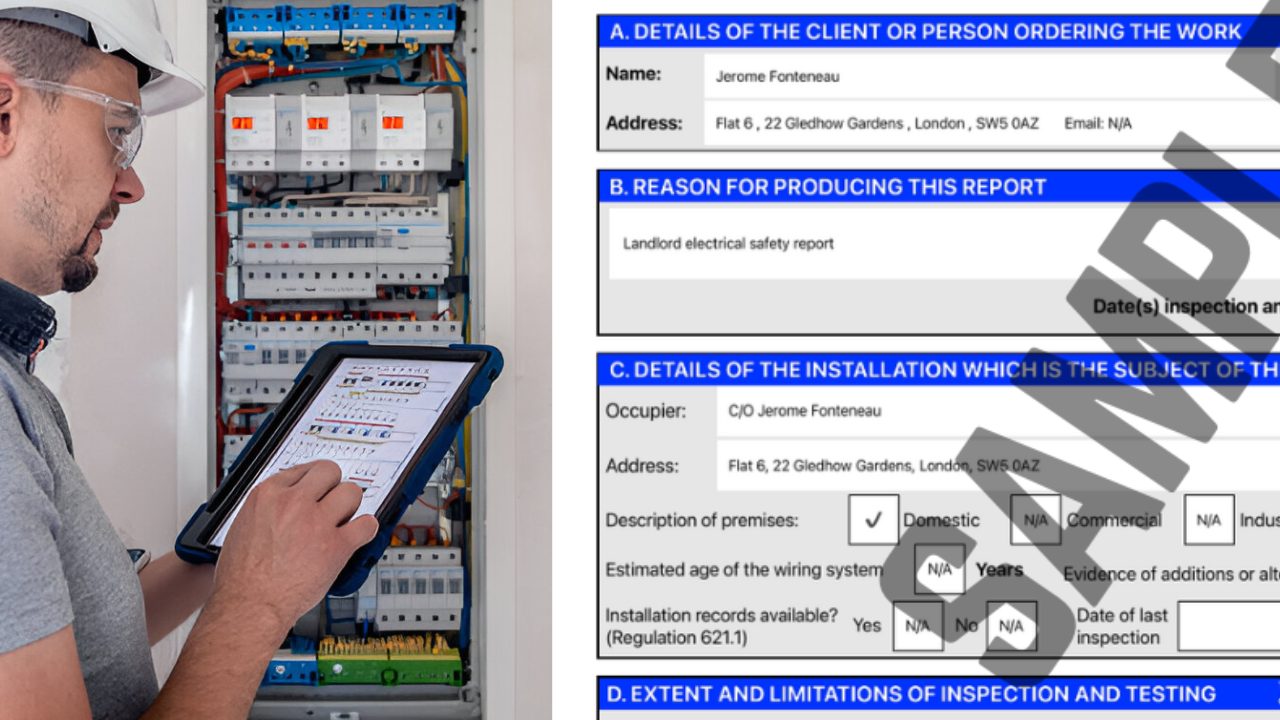
The EICR codes, influenced by factors like eicr frequency and eicr updates, guide the prioritization of electrical maintenance tasks. Regular updates to the EICR codes reflect evolving standards and technological advancements, underscoring the importance of staying informed to ensure eicr compliance.
The frequency of EICRs, typically influenced by the property’s usage and age, affects how often these codes are applied and reviewed, impacting overall eicr costs.
EICR compliance is not merely about adhering to regulations but ensuring the ongoing safety and efficiency of the electrical installation. Each code within an EICR pinpoints specific issues ranging from minor to severe, guiding the necessary financial and operational decisions to mitigate risks effectively.
Understanding these codes allows property owners and safety personnel to allocate resources wisely, ensuring safety while managing costs.
Code C1: Immediate Danger Explained
One must exercise extreme caution when encountering a Code C1 during an Electrical Installation Condition Report, as it signifies an immediate and present danger to property and personal safety that requires urgent attention.
This categorization underlines the severity of the electrical faults found, which could lead to serious harm if not addressed promptly.
The C1 implications are severe and demand immediate corrective actions. Examples of C1 scenarios include exposed live parts due to missing enclosures, severe damage to cables within reach, or situations where safety devices like circuit breakers are non-functional.
These conditions pose a direct threat, not only increasing the risk of electrocution but also enhancing the likelihood of electrical fires.
A thorough understanding of C1 examples helps in identifying and rectifying these hazards without delay. For instance, if an inspection reveals that insulation on wiring is compromised, exposing live wires, this constitutes a C1 defect.
Similarly, water ingress in electrical panels, which could lead to short-circuiting, is also classified under C1.
Addressing these issues involves not only the replacement or repair of the compromised components but also a comprehensive review of the entire system to ensure no other potential dangers are overlooked.
Immediate action mitigates these risks, safeguarding both human life and property integrity.
Code C2: Potential Danger Explained
Following the discussion of immediate dangers as designated by Code C1, Code C2 pertains to potential hazards that, although not posing an immediate threat, require corrective measures to prevent them from becoming more severe.
This classification emphasizes the urgency of addressing such issues before they escalate into critical failures, ensuring safety and compliance with electrical standards.
Code C2 is often assigned when the risk is not imminent, but if left unattended, could potentially result in hazardous situations. For instance, the absence of adequate earthing or bonding in certain installations might be classified under C2.
While this may not immediately endanger life, its future implications could be severe, risking electrical shocks or fires.
Additional examples of C2 scenarios include the presence of outdated wiring that does not comply with current electrical regulations but has not yet led to any malfunction.
In such cases, the wiring itself doesn’t pose a direct threat but should be rectified to meet standard requirements and mitigate any potential risks.
Understanding C2 implications is crucial for prioritizing electrical safety measures.
It serves as a proactive approach to electrical maintenance, ensuring that potential dangers are neutralized before they manifest into acute problems.
Code C3: Recommended Improvement Explained
Building on the understanding of electrical safety codes, Code C3 represents a recommendation for improvement rather than an immediate or potential hazard. This classification is crucial for property owners who aim to ensure their electrical systems not only meet current standards but also anticipate future compliance requirements.
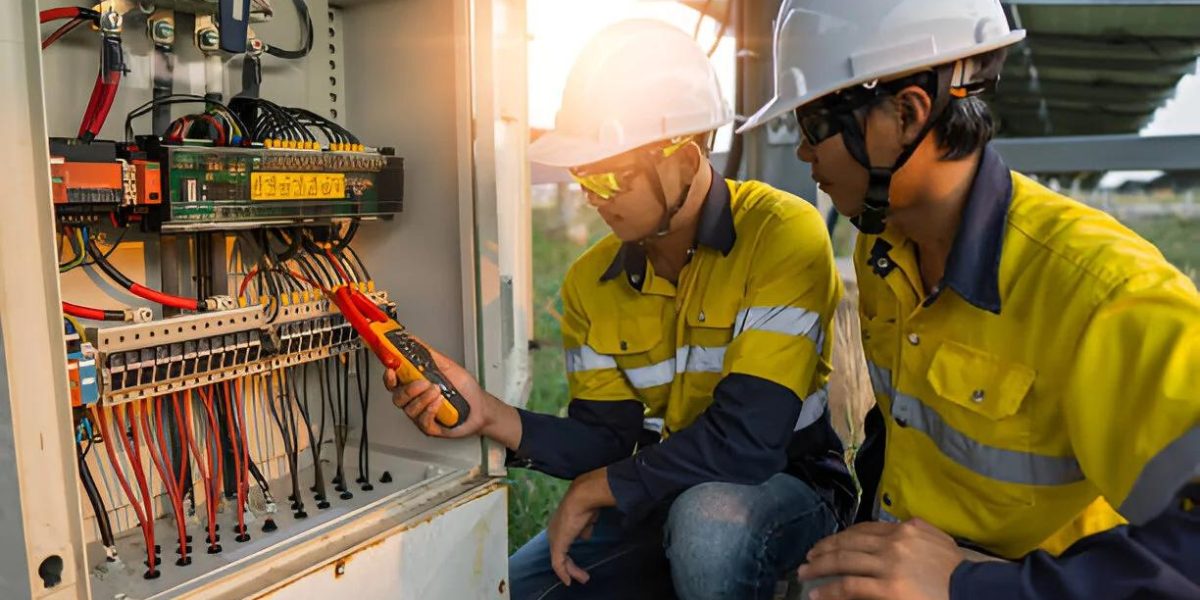
Code C3 does not imply a direct safety risk; however, it indicates areas where enhancements could significantly bolster the overall safety and functionality of the electrical installation.
When an EICR (Electrical Installation Condition Report) identifies a Code C3 issue, it typically suggests that while the installation may be deemed satisfactory at the time of inspection, there are identified opportunities for safety upgrades that could prevent deterioration into more severe classifications in the future.
These recommendations are often aligned with evolving standards in electrical safety and technology advancements, ensuring that the installation remains robust and compliant.
For property managers and owners, proactively addressing C3 recommendations is a strategic move. Implementing these improvements can not only extend the lifespan of the electrical systems but also enhance the safety of occupants and potentially reduce insurance premiums, demonstrating a commitment to high safety standards and diligence in property maintenance.
Code FI: Further Investigation Needed
Code FI, denoting “Further Investigation Needed,” signals that the initial inspection has uncovered potential issues that could not be conclusively assessed at the time. This designation triggers an investigation process that demands meticulous scrutiny to determine the underlying problems and their potential safety implications.
The issuing of a Code FI typically arises from observations that suggest deviations from standard electrical safety norms, but which lack sufficient evidence to quantify the risk or prescribe specific remedial actions.
The investigation process necessitated by a Code FI must be thorough and informed by a deep understanding of electrical systems. It often involves more sophisticated diagnostic tools or techniques, as well as possibly bringing in specialists with expertise in particular areas of electrical safety.
The goal of this intensified investigation is not merely to identify the existence of faults but to understand their nature, origins, and potential impact on the overall system’s safety.
This deeper dive into the electrical system’s condition is crucial because unresolved issues could lead to serious hazards, such as electrical fires or shocks.
Therefore, addressing a Code FI with urgency and precision ensures that the safety of the property and its occupants is not compromised, maintaining a high standard of electrical integrity and compliance.
Conclusion
In conclusion, the Electrical Installation Condition Report (EICR) serves as a critical tool in ensuring electrical safety within properties. By categorizing electrical defects into distinct codes—C1, C2, C3, and FI—the report facilitates precise risk assessment and prioritization of maintenance tasks. Property owners and tenants must comprehend these codes to effectively address potential hazards and enhance compliance with safety standards. Understanding and acting on EICR findings is essential for maintaining a safe living or working environment.
Our Pricing
| Our Electrical Safety Certificate Prices |
|---|
| Studio Apartment £67.99 |
| 1 – 3 Bedroom £94.99 |
| 4 Bedroom £104.99 |
| 5 Bedroom £139.99 |
Check Out Our Other Services
| EICR | Commercial EICR | Emergency Light Certificate |
|---|---|---|
| Electrical Diagnostic | PAT Testing | Fuse Box Installation |
About the Author: LandlordCertificate
Related Posts
Get Social
Recent Posts
- Fuse Box Installation: Everything Homeowners Need to Know Before Getting Started
- EICR Certificate London: Understanding Your Legal Duty as an Owner
- Behind the Scenes of a Gas Safety Certificate London Inspection in Homes
- The Role of Fire Alarm Installation in Building Safety
- How Often Should a Fire Risk Assessment Be Reviewed?


